It's hard to overestimate what a debt I owe to the City and County of San Francisco. I wouldn't be half the lover of ethnic food I am if I hadn't spent so much time there. I was working on a contract for the state government, and I completely missed the stars of the locavore movement, the pride of San Francisco, because my per diem was $36 a day, parceled out into specific amounts for each meal.

Because I had to eat cheaply, I ended up discovering some of the foods that I still love best. My bánh mì cherry, for example, was popped at Saigon Sandwich on Turk and Larkin Streets for the princely sum of ninety cents and I spent the next three days going on about the flavor explosion in my mouth.
My first experience with Ethiopian food, though equally as mind-opening as the Vietnamese sandwiches, has a dark and prejudiced story behind it.
]
I had been walking through the farmers' market at UN Plaza and made a wrong turn down a little tiny street along the butt end of the San Francisco Public Library. I walked past an open door and smelled… heaven. Spices and butter and ginger and garlic and onions wafted out of the door, making me suddenly hungry despite the early hour. The sign said the lunch buffet was vegetarian and $5.99, which made my impecunious wallet very happy.
I was working with a Web development team–this was the height of the tech boom–and I suggested the Ethiopian place in Grove Street. A few people assented, and we headed out across Civic Center Plaza.
“Mm-mmm, I can't wait to try that deep-fried air!” one woman sneered.
“Yeah, with stick and dirt sauce!” countered the man on my left.
“What the hell is wrong with you people?” I asked, mortified. “You wanted to come. Yet you're making these stupid jokes about a famine that happened fifteen years ago.”
The meal was not a success. I had a wonderful time and thrilled to the new sensations of niter kebbeh and berbere and lentils and collards with bread; my dining partners poked suspiciously at the food with the serving spoons, asked me what was in every single thing, bristled when I couldn't tell them, and then left for greener (to them) pastures at Max's Opera Café, leaving me alone to apologise, red-faced, to the upset woman running the front of the house.
It's a conversation I have often when I mention Ethiopian food to people who have never heard of it, despite the fact that we are now 25 years past the Ethiopian famine that was the impetus behind Live Aid. I've given up trying to convince some people, but this is an attempt to set that right.
Ethiopia has one of the richest, most interesting, most ancient sets of foodways in the world. No other cuisine on earth combines flavors as the Ethiopians (and Eritreans) do, no other cuisine on earth uses bread as plate, utensil and tablecloth, and with the possible exception of Indian cuisine, no other cuisine on earth cooks vegetables as well as Ethiopian.
Read on as we delve into the heart of East Africa.[
Injera
Ethiopian food would be recognizable amongst the world's cuisines simply by the presence of the large, flat, spongy bread known as injera. It is made from Ethiopia's own staple grain, teff, mixed with water and allowed to ferment and bubble into a thick, pancake-like batter. It is poured onto hot griddles and cooked on one side only until it resembles pancakes, albeit pancakes with the tops cut off to show off the nooks and crannies. It is stretchy and soft, but tears easily, and has a pleasantly tangy taste, like good sourdough.
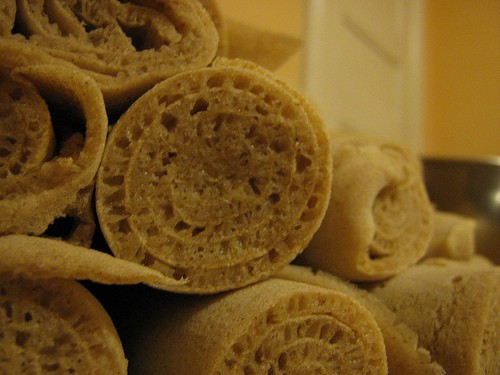
Ethiopians traditionally do not use utensils; instead, they use injera to scoop up pieces of food, like couscous in Morocco or naan in India. In upscale Ethiopian restaurants, which tend to be located in places
like Washington, D.C., a server will bring an ewer of water (sometimes
scented with flowers or herbs) and a dish, and you wash your hands at
the table. In other places, you'll need to remember to wash your hands
in the bathroom before taking any injera.
When you order at an Ethiopian restaurant, your food will come out on a plate covered in injera, with dollops of stew in a circle around the edge. Main dishes (meat or fish, if you order them) will be tipped from serving dishes into the center of the injera. A basket of folded injera will be passed around; take one. Tear off a small piece of injera and use it to wrap up a morsel of food, then pop it into your mouth. Traditionally, this is done with the right hand.
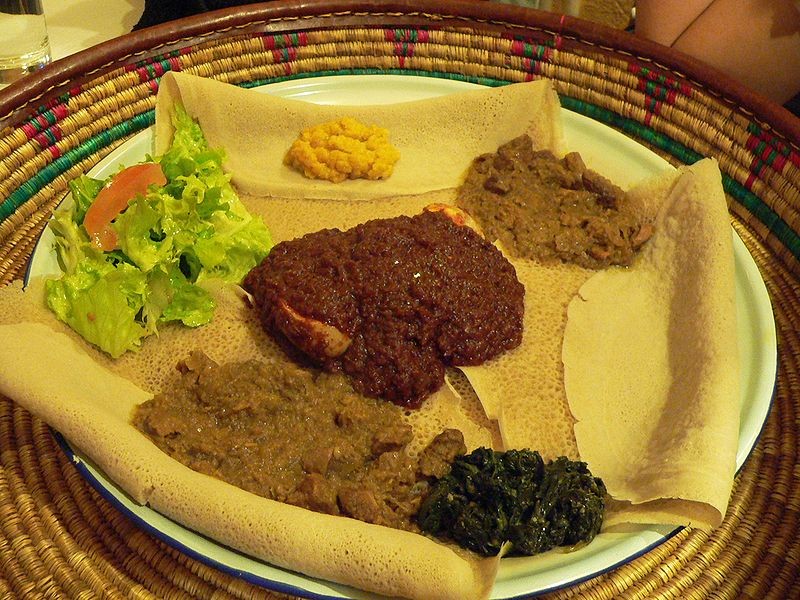
If you are at a very traditional Ethiopian restaurant, your food may not come on a plate, but on a decorative woven basket called a messob, in which case the injera will be laid on top to drape over the edges and the stews will be placed as they would be on a plate.
If you run out of injera, ask for more; once you're done with the food, don't forget to tear off “clean” pieces of the “plate” injera to scoop up the injera that's been soaking up all of the gravy.
Finally, if you are dining out with a loved one, you should try the Ethiopian tradition of giving gursha. Scoop up a bit of food in a bit of injera, then carefully put it in your lover's mouth. Allow your lover to reciprocate. This slows down the meal and turns a simple dish of food into a happy, slow, even romantic time.[
Spices
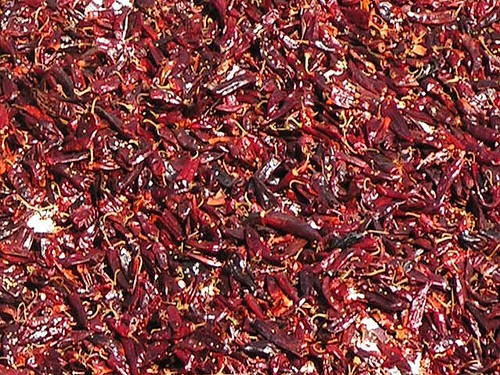
Ethiopia is in East Africa, near the origin of the spice trade, and this is evident in their love of combinations of warm spices. The base for nearly every Ethiopian dish is niter kebbeh, a clarified butter and cousin of ghee made by roasting ginger, garlic and onions in a blazing hot pan, peeling them, and simmering them with spices such as coriander in butter until the milk solids precipitate out. What's left is a thick, bright yellow cousin of ghee with a huge punch of flavor.
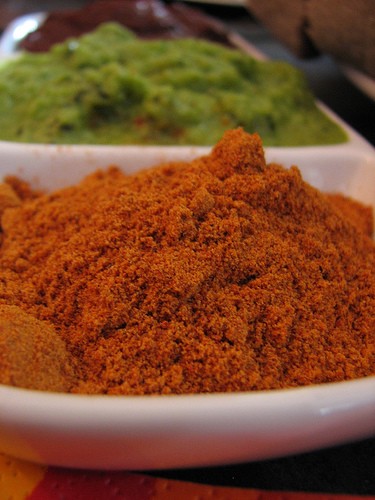
Ethiopians have three major spice-delivery ingredients. Berbere, the most common, is a mix of ginger, cloves, coriander, ajwain, allspice and dark red chiles that is sun-dried and then ground finely. If you pound berbere with more ginger and some garlic, you wind up with a spice paste called awaze. The same dried chiles ground with salt, cardamom and cloves make a powder called mitmita, spicier and saltier than berbere.
Spices are normally stirred into the cooking fat and aromatic vegetables at the start of cooking, but occasionally a small dish of mitmita will be placed on the dish (especially with kitfo, which we'll cover later). It is quite spicy but also very intensely flavorful. Ethiopian food in general is spicy in the sense of containing many spices, not spicy in the sense of containing much capsaicin.[
Vegetables
After injera, vegetables are the central part of the Ethiopian diet. Most Ethiopians are members of the Ethiopian Orthodox Tewahedo Church, one of the original churches of Christianity, which prescribes a huge number (well over 200 days a year) of fasting. Fasting in this case refers to eating food without meat or dairy, in order to atone for sins.
Since two-thirds of the calendar is officially a fast day, vegetables play a much larger part of the cuisine than they would otherwise. Common vegetable dishes include pulses such as various colors of lentils or chickpeas are prepared in various ways, dark leafy greens such as collards, various vegetable salads, mild chiles cooked with onions and cabbage. More interesting vegetarian creations include chickpea biscuits cooked in caramelized onions or green beans slivered with green chiles, and firfir (or fitfit–the Amharic alphabet has 231 letters and yet the transliteration to English is still an Herculean task), which is injera cooked with spices and tomatoes, a traditional breakfast dish.
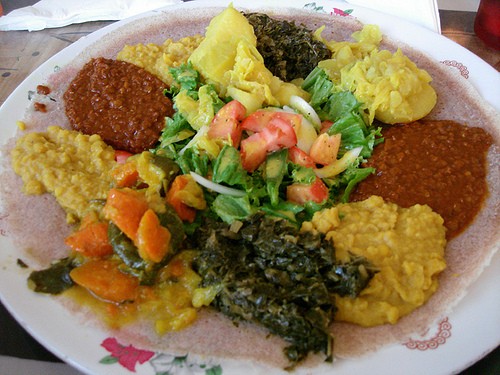
The best way to sample Ethiopian vegetables at Ethiopian restaurants in the US is on a sampler platter, which seems to be on every menu in an Ethiopian restaurant. Depending on the restaurant and price, you may get anywhere from six to twenty dollops of vegetarian (and sometimes vegan) food, usually about a half-cup each.[
Meat
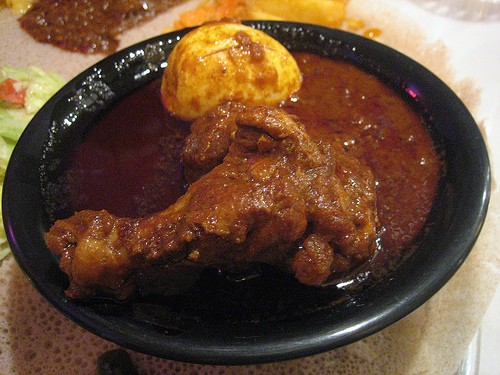
Ethiopians do eat meat, though not pork (it is forbidden by all three major religions in Ethiopia: the aforementioned Orthodox Christian church, Judaism and Islam). Most meat preparations can be divided into three basic categories. Wat (sometimes spelled wot) is a thick gravy that has chile heat in the sauce, whereas alecha (or alicha or aletcha) is a much milder gravy. Tibs are essentially Ethiopian fajitas.
Certain combinations of protein and preparation are more traditional than others: lamb alecha is a very common preparation of lean lamb cooked in mild sauce, and doro wat is chicken in a sauce heavily spiked with berbere, the chile powder of Ethiopia. Doro wat, if you order it on a menu, often consists of one chicken leg and sometimes a hard-boiled egg; it is not usually a huge portion of chicken, because the point is the sauce, not the meat. Zilzil tibs is strips of steak cooked with onions, green peppers and just a little bit of berbere; perhaps the Ethiopian food least threatening to meat-and-potatoes American diners.
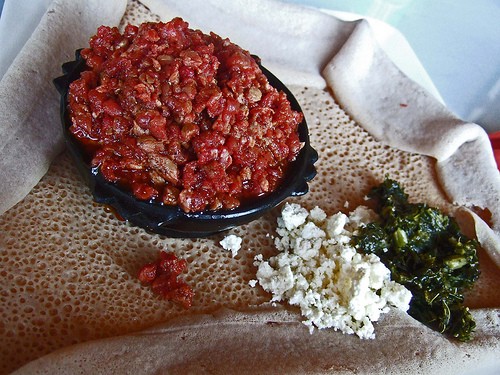
The truly adventurous, on the other hand, should try Ethiopia's traditional last course, kitfo. Kitfo is hand-chopped meat tossed with mitmita and warm niter kebbeh. The result is a surprisingly soft, fragrant dish with a huge hit of warm spice up front and a deep, intensely beefy aftertaste. Kitfo is usually served with homemade cheese, akin to small-curd cottage cheese; the cheese calms the taste buds and provides some flavor contrast to keep the tongue from tiring of the kitfo. If raw beef is not your bag, you can ask for it to be cooked lightly, but don't expect it to be served well-done. If you want fully-cooked meat, go for tibs.[
Coffee
Long ago and far away, the story goes, an Ethiopian farmer was up in the hills with his goats when he saw them munching a plant with berries and becoming strangely excited. Somehow, he was inspired to gather the plants, remove the berries to expose the seeds, roast the seeds, grind them and mix them with boiling water to produce the first brewed coffee in the world.
Whether that story is true or apocryphal is irrelevant; the fact is that the world has Ethiopia to thank for coffee, and Ethiopians take their coffee to a level of which Starbucks can only dream. Coffee service in most restaurants is served for two to four people, and shouldn't be rushed; get it if you have half an hour or an hour to spare lingering over it and chatting.
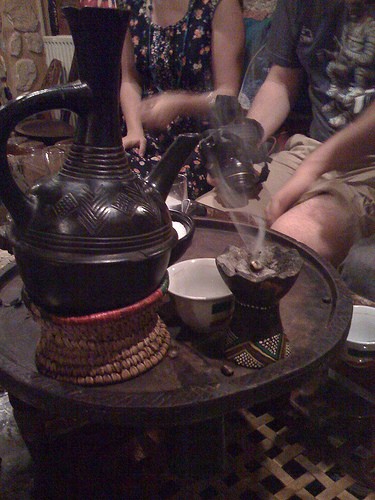
Most coffee service starts with the beans being hand-roasted over coals; this imparts a slightly smoky flavor and a deep flavor that isn't really possible in even small commercial batches (sorry, Martin Diedrich!). The coffee is then ground, often by hand, mixed with water and poured into a huge ewer.
The ewer is set with two impossibly small cups onto a tray along with a stone pot of smoldering frankincense. The incense wafts into your nose and you pour an impossibly tiny amount of coffee. Add sugar (you need to add sugar) and sip slowly. Some restaurants provide cube sugar; if you get this, you can drink the coffee as Persians drink tea, with the sugar held in your teeth. If you get a bowl of parched corn (or popcorn), it's meant to be a palate cleanser, to give your mouth a break between cups of strong coffee.
This is as close as coffee gets to pure, unadulterated caffeine. Sit and chat; refill the coffee for each other. Smell the incense; when the incense peters out, the coffee will be too strong to drink (this does, in fact happen, jokes about standing spoons up in it notwithstanding).
Where to get it
While the center of Ethiopian culture in the area is the stretch of Fairfax Avenue just south of Olympic Boulevard in mid-city L.A., we have two Ethiopian restaurants here in Orange County. Of the two, I prefer Tana (2622 W. La Palma, Anaheim), due primarily to the graciousness of the proprietor (Shewaye Zeleke, whom we interviewed a couple of weeks ago for our On The Line segment) but Merhaba (2801 W. Ball Rd. #5, Anaheim), actually an Eritrean restaurant (the food is very similar but the names are changed due to the language of Eritrea being Tigrinya, not Amharic) will also scratch your East African food itch.
What's next?
Up to you, readers. What cuisine should Ethnic Eating 101 cover next? The only restriction is that it has to be available in the distribution zone for the OC Weekly, which means OC and Long Beach. Leave a comment; stuff the ballot box. Whichever gets the most votes goes next.


I’m in dote on with the cbd products and https://organicbodyessentials.com/products/cbd-honey-sticks ! The serum gave my skin a youthful boost, and the lip balm kept my lips hydrated all day. Knowing I’m using unsullied, simpleton products makes me feel great. These are now my must-haves on a unorthodox and nourished look!